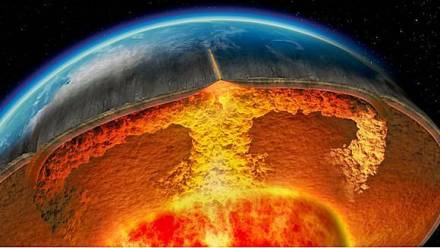-
Posts
2,767 -
Joined
-
Last visited
-
Days Won
174
Content Type
Profiles
Forums
Events
Posts posted by RAnDOOm
-
-
-
https://www.facebook.com/cmpgaming/

Like and share our Facebook page.
The more people we have engaged on it the more players will register in the community and play in the battles
https://www.facebook.com/cmpgaming/ -
-
Dont forget to join Discord everyone. We are active there every day.

-
 1
1
-
-

The iron-rich asteroid 16 Psyche is so valuable that, if mined, it would collapse the global economy
Named after a figure in Greek mythology who achieved immortality, 16 Psyche, which is almost entirely composed of nickel-iron metal, is worth so much money that its value would completely dwarf the meager $78 trillion of all the world's economies combined.
Measuring around 240km across, it is situated in the asteroid belt between Mars and Jupiter and is believed to be the exposed iron core of a protoplanet left over from the early solar system.
Now in a renewed effort to explore the secrets of this highly-prized target, NASA has taken the decision to fast-track a new mission that will see a probe visit, for the first time, a world, not of rock or ice, but of solid metal and reveal what is perhaps the most alien landscape ever seen.
"It's such a strange object," said lead scientist Lindy Elkins-Tanton. "Even if we could grab a big metal piece and drag it back here, what would you do ?"
"Could you kind of sit on it and hide it and control the global resource - kind of like diamonds are controlled corporately - and protect your market ?"
"What if you decided you were going to bring it back and you were just going to solve the metal resource problems of humankind for all time ? This is wild speculation, obviously."
As things stand, the 16 Psyche Discovery Mission is set to launch in the summer of 2022.Full Article here - https://www.sciencealert.com/nasa-just-fast-tracked-their-mission-to-explore-a-10-000-quadrillion-metal-asteroid
-

80 years on from the disaster, the exact cause of the inferno that destroyed the airship remains unclear.
One of the 20th century's most infamous disasters, the destruction of the Hindenburg - a large German passenger airship - occurred following its arrival at Naval Air Station Lakehurst in Manchester Township, New Jersey in May 1937.
The huge hydrogen-filled airship was carrying 97 passengers at the time of which 37 lost their lives when the vessel inexplicably burst in to flames and crashed to the ground, bringing with it any remaining confidence in airship travel in general.
Although it is obvious that the gas inside the ship provided the fuel for the blaze, the exact reason why the airship went up in flames in the first place has remained a topic of debate for decades.
One of the most popular theories suggests that the fire started when the buildup of static electricity on the airship's exterior came in to contact with a special type of 'dope' ( a mix of iron oxide and aluminum-impregnated cellulose ) that had been painted all over the canvas.
It wouldn't have taken much of a fire to set the hydrogen inside burning and for the blaze to consume the whole ship.
A second theory, which also takes in to account the flammable exterior of the Hindenburg, suggests that a steering cable at the back may have come loose and started to flail around, creating sparks which could have easily set off the fire.
Whatever the case though, the disaster proved so catastrophic for the airship industry that it was abandoned entirely soon afterwards, paving the way for the airplane.
The Hindenburg's sister ship, the Graf Zepplin 2, was the last great rigid airship of its day.
It flew 30 flights between 1938 and 1939 before eventually being scrapped in 1940.Full Article here - http://www.smithsonianmag.com/smithsonian-institution/80th-anniversary-hindenburg-disaster-mysteries-remain-180963107/
-
 2
2
-
-
Very nice.

Now we need some in-battle videos with those top notch graphics to promote the campaign and bring more people in. ^^
-
If we could fast-forward 1,000 years in to the future, what would life be like on planet Earth ?
-
 1
1
-
-

The US space agency has decided against placing astronauts aboard its new rocket on its first launch.
It has been almost 50 years since the last human set foot on the surface of another world and with the discontinuation of the Space Shuttle program back in 2011, manned space exploration has become limited to routine journeys to and from the International Space Station.
This could soon be set to change however thanks to NASA's Orion Crew Vehicle and Space Launch System - two projects which when combined have the potential to take humans all the way to Mars.
The first integrated test flight of these systems, Exploration Mission 1, had been set to achieve a retrograde lunar orbit in 2018 with a crew of astronauts along for the ride, but now, following a renewed feasibility and risk-assessment study, the decision has been made to scrap the manned portion of the mission with the hope of launching EM-1 in early 2019.
The move is probably wise, especially given the number of delays that have occurred so far and the amount of time and funds that would have been needed to implement support for a manned crew.
The first manned test flight is instead likely to be the follow-up mission - EM-2.Full article here - http://www.techtimes.com/articles/207201/20170513/no-astronaut-on-first-orion-sls-flight-around-moon-nasa.htm
-
Another tv show im watching: American Gods is an American television series based on the novel of the same name, written by Neil Gaiman and originally published in 2001.
http://www.imdb.com/title/tt1898069/
-
In the homepage there is a big box on the right side that says "TeamSpeak" .
Just click on one of the channels and you are in.

-
-
5 hours ago, Versus said:
Okay. I'll guess what my next step is. Thanks Kummitus
Great.

-
-
New smilies have been added to the forum for everyone to use. More can be added in the future.
Use this topic to test them out and search for possible bugged ones.
-
Yesterday night i saw

Split the latest movie by M. Night Shyamalan .
http://www.imdb.com/title/tt4972582/
Reminded me alot of Unbreakable another great movie by him.
It was actually good unlike his latest movies i must say.
-
-
-
Just started to watch the 3rd and last season of The Leftovers .
http://www.imdb.com/title/tt2699128/?ref_=nv_sr_3
One of my favorites from past years. Keep in mind its not for everyone.
9/10 - Episode 1 Season 3
-
2 hours ago, Gameplayer500 said:
Where is everybody from teamspeak?
On the CMP teamspeak.
ts3server://ts.cmp-gaming.com?port=9987
-
-
FH2 Videos
in Games
Some fantastic videos in here!
Great job everyone!

-
Awesome.
Unfortunately only played 2 full battles and some minutes on others.
Now im wondering what would my stats be if i played all battles.
Next campaign maybe.

Great job @Papillon .
-

The aim will be to drill all the way down through the Earth's crust for the first time in history.It's not quite 'Journey to the Center of the Earth', but if Japan's Agency for Marine-Earth Science and Technology (JAMSTEC) succeeds in its goals it will mean that, for the first time since efforts began more than 50 years ago, humans will have succeeded in reaching the planet's mantle - a silicate rocky shell which sits between the Earth's crust and the outer core.
The most recent attempt to reach the mantle, which was carried out by the Joint Oceanographic Institutions for Deep Earth Sampling, ultimately only managed to drill down 700 meters - a mere fraction of the total thickness of the crust which is believed to be around 35 kilometers.
The JAMSTEC team will be using the Chikyu drilling ship for their attempt however they are unlikely to start drilling until 2030, instead opting to conduct a series of preliminary studies beforehand.
Full article here: http://gizmodo.com/japans-scientists-believe-theyll-be-the-first-to-reach-1794142072











E3 2017
in Off-Topic
Posted